#The National Railway Museum
Explore tagged Tumblr posts
Text
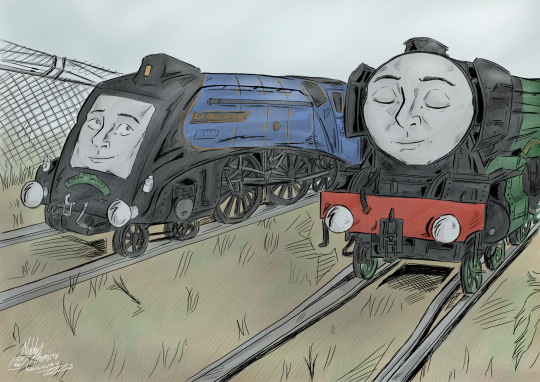
The Flying Scotsman and Sir Nigel Gresley at the sidings of The National Railway Museum in York.
#I love sleepy Scotsman here#he looks so content#sleepy engines#thomas and friends#artists on tumblr#thomas the tank engine#the flying scotsman#the flying Scotsman ttte#ttte fandom#ttte fanart#ttte the flying scotsman#ttte flying scotsman#flying scotsman#sir nigel gresley#ttte#national railway museum#the national railway museum
96 notes
·
View notes
Text

Happy 60th birthday to a legend! The Tōkaidō Shinkansen began service on 1 October 1964, using the 0 Series pictured above. I took the photo in the National Railway Museum in York, England. It's the only shinkansen outside Japan.
#a real unit :)#the 0 Series was withdrawn in 2008#my photos#新幹線0系電車#York National Railway Museum#I had a few rides on the 0 Series#I've been in Japan that long o.0
177 notes
·
View notes
Video
youtube
RAILROAD TOWER AND CABOOSE INTERIOR TOURS AT GRIFFITH, INDIANA
#RAILROAD TOWER TOUR#RAILROAD CABOOSE TOUR#RAILWAY MUSEUM#RAILROAD PHONE#EJ&E RAILROAD#CANADIAN NATIONAL RAILWAY#CN RAILROAD#MULTIPLE RAILROAD DIAMONDS
19 notes
·
View notes
Text












Twelve alternative takes from the National Railway Museum of Portugal, in the city of Entroncamento.
#National Railway Museum#Museu Nacional Feroviário#Entrocamento#Médio Tejo#Ribatejo#Lisboa e Vale do Tejo#Portugal#original photos#photography#photographers on tumblr
15 notes
·
View notes
Text






















Toronto became the capital of Ontario on September 28, 1867.
#Nathan Phillips Square#summer 2018#2015#original photography#travel#Toronto#capital of Ontario#28 September 1867#anniversary#vacation#Canadian history#Canada#Fort York National Historic Site of Canada#Distillery Historic District#Allen Lambert Galleria#Brookfield Place#City Hall#Toronto Railway Museum#Lake Ontario#CN Tower#Grange Park#Union Station#tourist attraction#cityscape#architecture#landmark
18 notes
·
View notes
Text

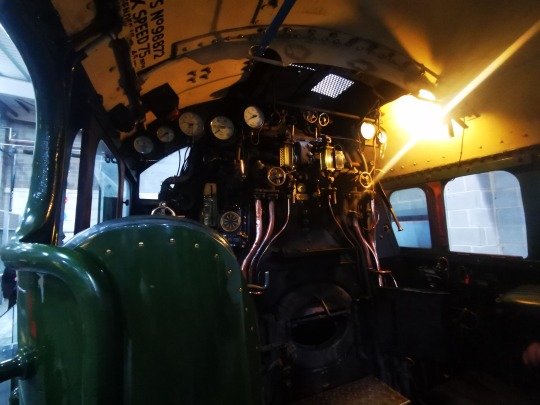


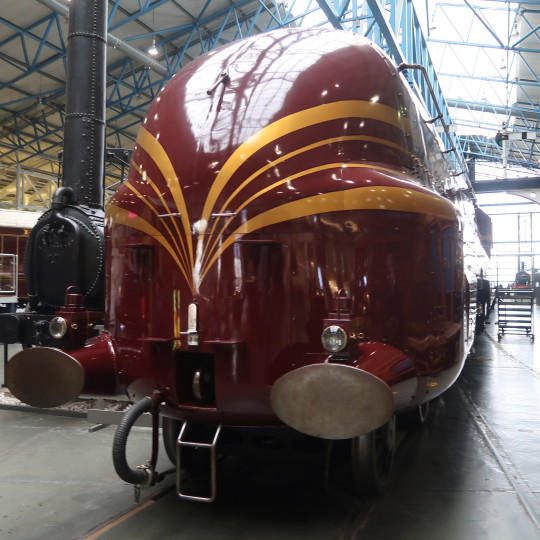
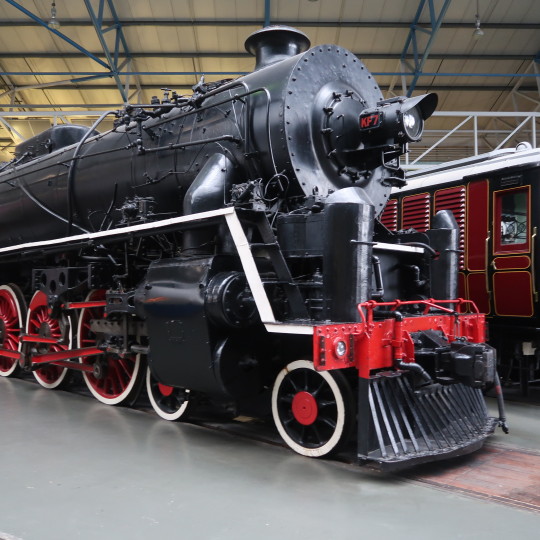
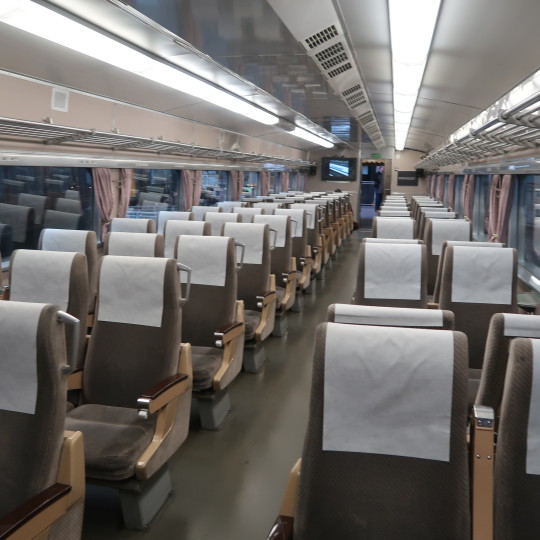

15. 3. 24
National railway museum, York
38 notes
·
View notes
Text
York National Railway Museum Photo-dump
















28.8.24
I don't think the Flying Scotsman was there [uwe uwe uwe soung of crying] but the trains were so big and cool I forgot about being sad :)
14 notes
·
View notes
Text
I was at the Talyllyn Railway this week and spent today at the National Railway Museum. Did y’all know the NRM has a library? They had Thomas at the Railway Show :>
I will definitely post pictures of what I saw and what I bought for myself soon cause oooo it’s so cool
5 notes
·
View notes
Text

#train#shinkansen#national railway museum#york railway museum#york#my photos#photography#photooftheday#photoblog
2 notes
·
View notes
Video
Replica of the Rocket,National Railway Museum,York por berenice carroll
6 notes
·
View notes
Text
Flying Scotsman in 2004 - A Comedy of Errors and Owners:
Ok - so this is something I've been sitting on for a while now, but I feel like with 'The World Famous Engine' now being uploaded to Ao3, now is the right time to cover this rather insane topic. See, we all know the story of Flying Scotsman and the NRM: the NRM bought the engine for the nation, and then sent it into the Works for 1 years' worth of work in 2006... One year of work that ended up spiralling into ten years and £4.2 million.
But behind that story is a rather more shocking story, and one that really needs more recognition to help people understand just how absolutely shockingly Flying Scotsman had been treated before that overhaul.

Sir William McAlpine:
Our story most likely begins under Alan Peglar, but I have a rather sneaking suspicion it actually gets interesting under McAlpine. Sir William McAlpine bought 4472 Flying Scotsman in 1972 to save the engine after Alan Peglar went bankrupt in San Francisco, leaving the engine on a US Military Base.
He brought Scotsman and had the engine restored at Derby Works in England, and then successfully owned and ran the engine for another 23 years, making him the longest-lasting and most successful of all Scotsman's owners.
Pretty good achievement!
But, during this era, Flying Scotsman visited Australia, broke the record for the longest non-stop run by a steam locomotive, pulled the Royal Train, ran on a multitude of heritage railways and mainline excursions, got an overhaul three times - including one at Barrow-in-Furness (story idea, anyone?). This is not where the worst of the issues arose from, but it does give you a good idea of the kind of work this engine was being tasked with.
And then in 1995, it was involved in an accident at Llangollen Railway. When put back into steam, smoke emerged from a crack separating the boiler and the front cab. It was deemed a total failure and immediately withdrawn from service immediately - and that's what did McAlpine in. He sold the engine off to cover some debts, and Tony Marchington
What do I think went wrong here? I have a feeling that Scotsman was run pretty haggard in Australia (which, fair - it's not always a very nice country to machines) and when refitted to his BR livery, several... shortcuts were made to get the engine back in service. All the same, this isn't where the trouble came from.

Tony Marchington:
And here's where things went south. Fast. Flying Scotsman was bought, went through a three-year long overhaul worth £1 million and then was set to work. Thing is, that overhaul had a number of red flags surrounding it - perhaps most notable being the fitting of an A4 boiler working at 250psi. Now, for those unaware - the original A1 class ran at 180psi, and the upgraded A3 class ran at 225psi. The engine was being run at a pressure it was extremely unfit to operate with.
It would be a bit like fitting a massive V12 motor to a Honda Accord. Yes, the car will move extremely fast and look impressive and move for a while, but every other piece of that car will deteriorate rapidly due to the pressure it's all under. Now transfer that to a steam locomotive - one where to reach that pressure, the firebox is under a lot of strain.
Flying Scotsman failed a lot during the Marchington era, and it's not surprising why. The poor engine was literally falling to pieces - as one NRM staffmember noted: "On our first inspection, the rear drivers had been removed to deal with bearing problems. The visiting NRM team was most unimpressed with the quality of work being done on the bearings. Other examples of poor workmanship (of which I cannot remember the detail) were evident on inspection.”
Please note, the bearings and valves had all recently been replaced.
Also note, Tony Marchington was under pressure from the shareholders of Flying Scotsman PLC - a company he set up - to make money, and so many of the fitters working on the engine may have been given far, far too many constraints in time and budget to properly overhaul the engine, in essence needing to just 'do the bare minimum to get it back in service'...
And this is the condition the NRM bought 4472 Flying Scotsman in.
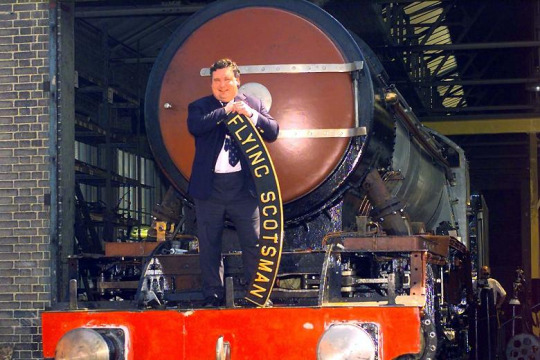
The National Railway Museum:
All of the above is an indication of the condition that Flying Scotsman was in when bought in 2004 - but that only tells about half of the story. The other half is a bunch of issues surrounding the purchase, certification and understanding of just how bad things were. And make no mistake, the NRM is not blameless in this circus - it just managed to inherit a bad situation and then fumble with it until they sat down and figured out what had happened.
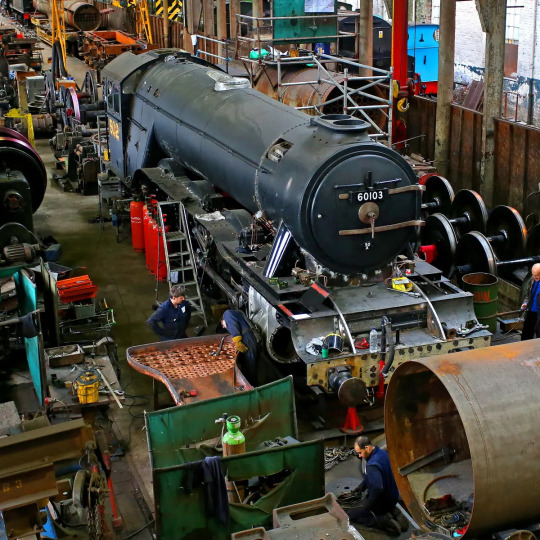
Let's take a moment to look at the AEAT report that the NRM got, then compare it to reality:
The AEAT report stated that:
"Whilst it was not possible to complete a thorough examination of the locomotive, or to witness it in steam, the condition of the locomotive has been monitored regularly as part of the VAB audit process. Taking this into consideration, it is considered that the general mechanical condition is satisfactory for continued operation, subject to effective maintenance, until the next General Overhaul in 2006. The scope of mechanical overhaul is not anticipated to be extensive but will involve strip down of the motion and axleboxes to gauge wear and remedial action. The cylinders all require re-lining and boring to nominal diameter."
The reality of the condition of the engine was far from this rather rosy portrayal given by AEAT. For starters, the engine was not properly examined, and several areas of testing were 'not possibly to be checked adequately' for a variety of reasons, including:
the locomotive was being prepared for a test run
equipment failure
4472 Flying Scotsman not being in steam
Anyone notice something off? Why exactly can the company not see how the engine is when in steam if the engine is being prepared for a test run?

Furthermore, AEAT had been the VAB (Vehicle Acceptance Body) for Flying Scotsman for 14 years by this point and finding a huge number of faults at this point very much would have raised questions about their work. More probably, the company had grown accustomed to the engine working, and simply assumed everything was satisfactory unless demonstratable to the contrary. Like the NRM admitted:
"[T]he previous owner’s VAB may not have been the best choice of inspector."
Thing is, AEAT included pictures in their report, but most of these were of the air brake compressor, locomotive air brake, tender air brake cylinders, TPWS antenna selection switch and the TPWS antenna mounting arrangements, which while critical to obtaining permission to operate on Network Rail, don't say much about the actual condition of the engine. And the photos that were of the actual mechanical parts of the engine were... telling.
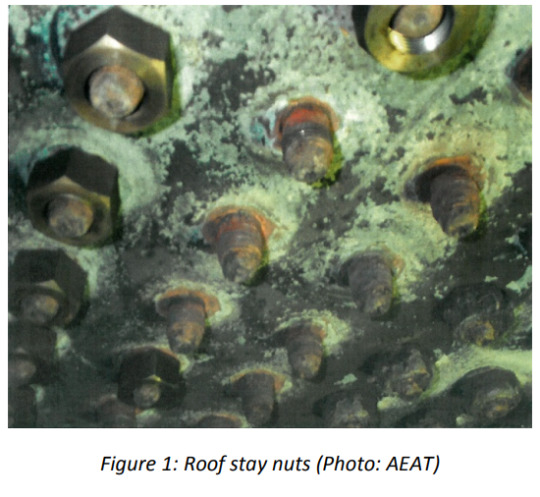
The Stay Nuts in the firebox are rusting, melting and missing. And that wasn't the only major issue with the engine - several of which were extremely dangerous:
the Robinson superheater header doors had been seal welded;
other inspection doors had also been seal welded;
Repairs to defective studs on the superheater header were needed;
the smokebox door locking mechanism was broken;
the firebox stays needed caulking;
the boiler mountings and pipework in the cab was considered dangerous;
the air brake reservoirs were overdue re-certification;
two tender springs needed replacing;
Re-metalling one crosshead was needed, which resulted in having to remove the bogie, and led to the discovery that the piston rods were incorrectly fitted to the crossheads and required extensive repairs in order to make them fit properly;
Removal of the 'belly' access door in the bottom of the boiler barrel in order to remove a build-up of some 6 inches of sludge;
one of the tender wheel tyres was flat;
the air pump needed repairs;
the vital axlebox oil pads which were long overdue for replacement;
the tender handbrake just didn't work and needed repairs;
121 boiler tubes needed replacement (2004);
the boiler itself needed replacement (2006);
Foundation ring heavily corroded and cracked;
a large number of latent fractures throughout the whole of the locomotive's frame assembly;
the valves and bearings were faulty or broken;
there was a serious crack in the right-hand cylinder;
the entire firebox itself was in desperate need of replacement;
the boiler washout plugs had been fitted with domestic gas plugs;
the wheels are all in need of re-turning;
the frame hornblocks are all cracked;
one of the driving wheels was bent;
the frame stretchers were all cracked and beyond repair;
The centre-cylinder motion bracket also had cracks;
The frames were wrongly aligned;
And the frame's horn ties were scrap, and needed to be remade.
That is thirty separate issues that the NRM discovered between 2004 and 2012 restoring the Flying Scotsman. The Flying Scotsman needed such a complete overhaul to be restored that some people argued that it would cheaper to just build an entirely new engine.
A completely new version of this engine:
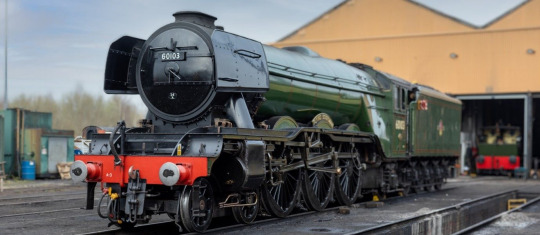
And remember, AEAT certified this engine to run on the mainline. The Flying Scotsman had turned into a literal moving death trap under its various owners, and I am not surprised it cost the NRM £4.2 million to rebuild Flying Scotsman.
In summary, 4472 Flying Scotsman was about as sick as an engine could get when it arrived at the NRM. The amount of work required to fix the poor engine was extensive - and some may argue unjustified. Personally, I disagree. Yes, Flying Scotsman cost a ridiculous amount of money to save and rebuild - but this is not an engine who would ever accept living on a plinth in a museum. This is an engine with a fascinating history filled with trials, tribulations and triumphs; and in my opinion the Flying Scotsman's place is on the mainline. Will there be a day when the old engine has to be withdrawn and placed in the NRM? Probably - it's the oldest mainline certified engine in the UK already, and it's not getting any younger. But by that same token, Flying Scotsman went through a massive, extensive overhaul to ensure that generations to come could see the majestic A3 doing what it always did best, and there's something truly inspiring about that.
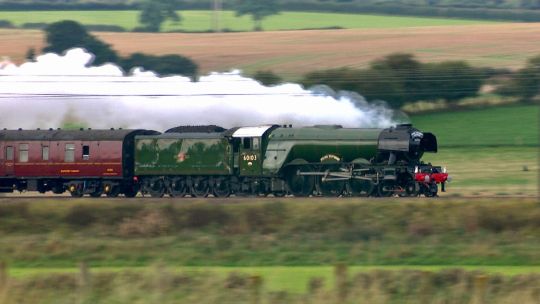
A big thank you to the NRM for saving Flying Scotsman, and an even bigger 'what the hell?' to the people who almost destroyed it by being careless.
The pictures used in this post do not belong to me. All pictures belong to their owners. If you wish to read the NRM Flying Scotsman report yourself, this is the URL, and a hyperlink to its archived form on the Wayback Machine:
#weirdowithaquill#railways#real railway stuff#Flying Scotsman#4472 Flying Scotsman#NRM#The National Railway Museum#Flying Scotsman very nearly didn't get his happy ending#There was a lot wrong#this stuff is crazy#long reads#very long post#lner a3#wayback machine
139 notes
·
View notes
Text
Saturday Movie Night: Confessions of a Trainspotter
youtube
Michael Palin has to travel to the Kyle of Lochalsh on business, and has decided to go all the way by rail. What with having been such an avid train spotter in his youth, though, Michael simply can't stop himself from making a few diversions along the way.
First stopping off at Rainhill to observe the Rocket 150 celebrations, Michael then hitches a ride on the Flying Scotsman on a special excursion to York - where, of course, he looks around the National Railway Museum. After a ride on the North York Moors Railway, he is whisked away on the latest Intercity 125 to Edinburgh, just in time for festival season. Then it's up through the heart of the Highlands to Inverness, and along wildly romantic coastlines to the Kyle of Lochalsh. All the while, Michael talks with some of the people helping to keep the railway age alive.
And all this, just to keep a business appointment! But as Michael says, there are some treasures you just can't find anywhere else...
#saturday movie night#confessions of a trainspotter#1980#michael palin#monty python#british railways#british rail#ttte plot inspiration#real true railway stuff#flying scotsman#national railway museum#north yorkshire moors railway#bbc#vhs#great railway journeys of the world#Youtube
6 notes
·
View notes
Text
Brother convinced me into a birthday trip

Saw this Big Ugly Lug (affectionate) and spent like three quarters of the time explaining stuff to him (at his request!)
Was actually really nice
6 notes
·
View notes
Text
FUKUOKA 福岡
数日前に、「昔、友人達と一緒に福岡を観光した」って書いたと思います。10年ぐらい前の写真になります��、写真アルバムを整理していたら見つけたので、今回紹介します。 昔から食べることと歴史的スポットが好きなので、観光で行くところはレストラン、カフェ、お寺、神社、博物館系が多いかな。祖父母とずっと一緒に暮らしていたので、その影響が少なからずあります。 福岡までは、名古屋出発で新大阪駅へ。あ、この時も大阪に行ったことは行ったんだ…と写真を見て思い出しました。 平日の始発に乗ったからかもしれませんが、乗客が余りいなかったような… 新大阪駅で乗り換えて、博多駅へ ブログにも書いた通り、私の夫が言っていたポークの匂いがする「博多(豚骨)ラーメン」 お腹がいっぱいになった後は、「太宰府」へ行きました。そういえば、「大宰府」と「太宰府」と2つの表記の仕方がありますが、古代の役所に関連するものは…
#お店#レストラン#福岡#終発#Dazaifu#Dazaifu Tenmangū#Ekiben#違い#静岡県#表記#駅弁#豚骨ラーメン#Fukuoka#Japan Trip#Japanese Museum#Kyushu National Museum#Maneki Neko#Railway Bento#Ramen#Shinkansen#Shinto Shrine#Station#Tonkotsu#博物館#博多#博多駅#友人#名古屋駅#大宰府#太宰府
1 note
·
View note
Text











National Dump the Pump Day
Join the movement to decrease global gas usage by leaving your car at home and giving public transport, cycling, or even walking a try instead.
Every year we get closer to depleting the petroleum available in the world today, these fossil fuels won’t last forever and demand is only continuing to increase. There are other options out there, everything from taking the public transportation to using vehicles that don’t require gasoline.
Biking is unquestionably better for you, and many forms of public transport these days use propane or even electric. Dump The Pump Day encourages you to give yourself and the world a break from the pump and start changing the world.
Learn about Dump The Pump Day
The purpose of Dump The Pump Day is to encourage people to use public transport instead of driving. When the economy is tight and gas prices are high, using public transport is a great alternative, providing people with an excellent way of saving money.
A lot of people use local transport to make family visits, run errands, and commute to and from school and work. Doing this is not only a great way to save money on fuel, but you can also reduce wear and tear on your car as well. There are other benefits to consider too. Road congestion will be reduced if everyone tries to use public transport more often. Plus, the fewer cars on the road means less pollution too.
History of Dump The Pump Day
As petroleum fuels start to deplete the price of gas inevitably goes up with it, it’s a simple case of supply and demand. Dump The Pump Day was aimed at encouraging people to start reducing the amount of gas they spend by finding alternate ways to handle gas consumption.
Dump the Pump Day first started in June of 2006. The purpose of the day was to present public transport as a convenient travel option that helps people to save money. Since then, public transport companies and individuals around the world have been promoting this day.
It all starts with just simply not using their car for a day, but it can expand even further beyond that. There are other options showing up on the horizon, with hybrid cars taking some of the gas cost out of driving, and electric cars eliminating it completely.
Even if you can’t avoid using gas today, if your family uses two vehicles you can cut down to using just one car. It’s been shown that families who downsize to using just one car can save themselves up to $10k in gasoline every year, just on daily driving.
When it comes down to brass tacks, it’s all about finding ways to avoid using the pump on Dump The Pump Day and finding ways to help save the world and the future.
How to celebrate Dump The Pump Day
Celebrating Dump The Pump Day begins by choosing a method of transportation that doesn’t require you to stop at the pump. Look into public transportation routes, using them not only helps you save money but also aids your community to an unexpected degree.
Spend $1 on public transportation, and the community sees a return of $4 in economic benefit, that’s a 400% boost, all by choosing not to use gas! Whatever you do, help break yourself off the pump and find a new way to make the world a little more oil-free!
You can also use this day as the perfect opportunity to re-think the way that you travel on a daily basis. Sit down and make a list of all of the journeys that you are likely to take within your usual week. This could include going to and from work, visiting friends and family, and doing your weekly shop.
Now, see whether it would be feasible for you to switch any of these visits from being car journeys to journeys whereby you use public transport. For example, could you take the bus to work instead of driving? Could you hop onto the train to see your friends and family members? You can do the calculators to see how much money you would save as well.
How much does it cost you to fill up your tank with gas for the week? How much would it cost you to get the bus instead? You will probably find that public transport is considerably cheaper. By making a list and comparing all of the options out there, you will be able to make your travel as economical as possible, and that’s what Dump The Pump Day is all about.
There are a number of other ways that Dump The Pump Day can be promoted and celebrated. For example, if you run a business, you may encourage all of your employees to take the bus to work on that day. Another option is to add a fuel savings calculator on your website so people can discover how much they would be able to save if they did decide to use public transport.
Raising awareness is another part of Dump The Pump Day. There are a lot of factsheets and infographics that are floating around regarding public transport, and you will find that more are created in the build-up to Dump The Pump Day every year. Share this content with your friends, family members, and followers as a great way of building awareness and getting more and more people involved!
Source
#Edmonton#Alberta#National Dump the Pump Day#NationalDumpthePumpDay#19 June 2025#third Thursday in June#CTA#the El#public transport#Chicago#travel#I don't own a car#Damen Station#Lisbon Cathedral#tram#MV Leif Ericson#Tom Swayer#ferry#TTC#Toronto#Canada#Toronto Railway Museum#MTA#subway#train#cityscape#USA#Sweden#vacation#original photography
4 notes
·
View notes
Text
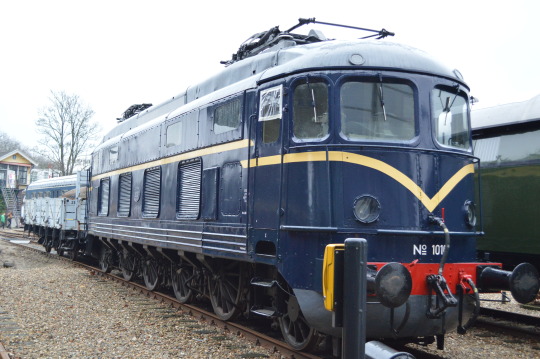
3 notes
·
View notes
